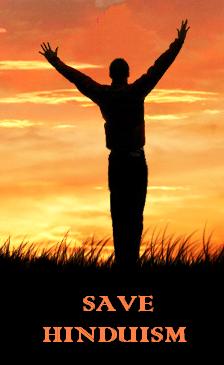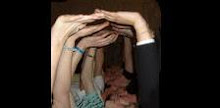 Lord Vishnu is the all-pervasive Lord who expands into everything. He is the maintainer of the universe and the complete cosmic creation. He is called Vishnu because He overcomes all. He represents sattva-guna, or the mode of goodness by which everything is sustained. He is also called Narayana, which means the shelter, resting place or ultimate goal of all living entities. It also means the one whose abode is the causal waters ( Karana Ocean ), and one who lives in the hearts of all living beings. It is this sattva nature which gives the living beings the tendency to grow toward a higher truth, the light, a more cohesive and intense reality. In this sense, Lord Vishnu is also called Hari, or one who removes the darkness of illusion. This illusion ultimately means the idea that the living beings live separate from, or without connection to, the Lord.
Lord Vishnu is the all-pervasive Lord who expands into everything. He is the maintainer of the universe and the complete cosmic creation. He is called Vishnu because He overcomes all. He represents sattva-guna, or the mode of goodness by which everything is sustained. He is also called Narayana, which means the shelter, resting place or ultimate goal of all living entities. It also means the one whose abode is the causal waters ( Karana Ocean ), and one who lives in the hearts of all living beings. It is this sattva nature which gives the living beings the tendency to grow toward a higher truth, the light, a more cohesive and intense reality. In this sense, Lord Vishnu is also called Hari, or one who removes the darkness of illusion. This illusion ultimately means the idea that the living beings live separate from, or without connection to, the Lord.Lord Vishnu is often portrayed resting on the huge serpent of Sesha. We see that the thousand heads of Sesha are all turned inward, representing a tranquil mind, and looking toward the Absolute Truth of Lord Vishnu. Lord Vishnu is also seen in the yogic sleep called yoga-nidra. The yoga-nidra (yoga or the root yuj meaning to connect or join) is a cosmic sleep wherein the Lord is focused on the Infinite Reality of His own identity.
Lord Vishnu is also seen standing on the whirl of a lotus flower with four hands, which represent the four directions and indicates His absolute power in the four corners of the universe. Each hand holds an item, such as a disc, lotus, conch, and mace. Of the four items, the conch represents the five universal elements. When the conch is blown, it is said to produce a sound related to the original vibration of universal creation. The Lord also blows His conch in calling everyone to turn to the higher reality rather than remaining in the darkness of material existence. This calling is the inner voice which nudges all beings of conscience to seek the Absolute Truth. If man does not heed the call, then the Lord may still use His conch to cut asunder the ego and material attachments of those who do not turn toward the spiritual path.
The disc or chakra signifies the universal mind or awareness. It rids all darkness wherever it appears, and thus shows the path to higher awareness. The disc is called Sudarshan, the limitless power and light that destroys all forms of ignorance. Thus, Lord Vishnu allows it to cut off the heads of envious demons. It has six spokes and shows the revolving nature of the universe (maya) around an unmoving and changeless center. The Sudarshana Chakra, when shown alone, is often viewed as a person with four, eight, or sixteen arms, holding such items as a bow, arrow, trident, noose, and a poker. These are said to represent the will and power of the Lord to not only create but to also destroy the universe.
The mace represents the cosmic intellect or knowledge. It is called Kaumodaki, meaning that which captivates the mind. It is also associated with time, which destroys all, and is thus also related to Kali, the power of time.
When pictured as a deity, it is viewed as a female with two hands, positioned in respect. The lotus being twirled in His hand shows the revolving or changing nature of the universe. It also indicates the real purpose of human existence, which the Lord invites all to follow.
The Vaijayanti garland (garland of victory) with five rows of flowers that the Lord wears indicates the five senses and the Lord’s illusory power which affect the senses. Its fragrance represents the subtle elements found within the material manifestation. All this reflects the Lord’s mastery of the whole universe, which is created out of the mixing or revolving of the five elements and the universal mind and intellect. The Srivatsa or lock of hair on the Lord’s chest, which indicates the Goddess of Fortune, represents the products of the material creation, or the objects of enjoyment for which all living beings seek. And the gem, called Kaustubha (Treasure of the Ocean) represents the one who enjoys these products. Thus, this world of the enjoyer and the enjoyed is but a piece of decoration for the Lord, a spark of His energy.
Lord Vishnu is also sometimes seen with additional items, such as a bow, called Sharnga. This represents the darker form of false-ego that makes one think he is nothing but the material body, not connected to the Lord. The arrows are the activities of the intellect, which can cut through false-ego when used properly. His fish shaped earrings represent the two processes of knowledge, such as through the sankhya (intellectual) and yoga (intuitive) methods. His armlets represent the three goals of worldly life, namely dharma (righteousness), artha (economic success) and kama (pleasure). Lord Vishnu’s crown represents the highest and incomprehensible reality. The yellow cloth that He wears (Pitambara) is said to indicate the Vedas. Through the Vedic hymns the divine reality is revealed, just as the Lord’s dark color can be seen through the cloth that He wears. And His sacred string, made of three threads, is said to indicate the three letters of the hallowed word AUM.
The various forms of Lord Vishnu are composed of the different arrangements of the four symbols He holds in His four hands. For example, in one form He holds the conch in His lower right hand, the disc in His upper right, the mace in His upper left, and lotus in the lower left. In this form He has the name of Keshava, meaning the Lord with long hair, according to the Padma Purana (Book Four, Chapter 79). In other forms, in which case He holds the items in different hands, He has the names that include, Narayana (the universal shelter), Govinda (saver of the Earth and protector of cows), Madhava (Lord of knowledge), Madhusudana (the destroyer of the demon Madhu), Trivikrama (the one who conquered the three planetary systems), Vamana (the dwarf incarnation), Shridhara (the possessor of fortune), Hrishikesha (Lord of the senses), Padmanabha (whose navel produced the universal lotus), Damodara (who is self-restrained), Sankarshana (who reabsorbs), Vasudeva (one who dwells within), Pradyumna (who has the most wealth), Aniruddha (who no one can oppose), Purushottama (best of all men), Adhoksaja (the expanse of the universe), Nrisimha (the half-man and half-lion form), Achyuta (the inconceivable), Krishna (the dark and all-attractive one), Hari (He who removes obstacles or sorrow), Janardana (He who gives rewards), and Upendra (the brother of Indra).
Lord Vishnu is also called Nilameghashyama for having a dark blue complexion. This represents a number of things, including pure consciousness, the infinite, and the all-pervading power.
At other times Lord Vishnu is seen resting on the coils of the serpent Shesha, also called Ananta. Sheshanaga is the expansion of Lord Balarama, Lord Krishna’s brother, and serves the Lord in this way as the Lord’s support and paraphernalia. Shesha has a thousand heads swinging to and fro over the form of Lord Vishnu, creating a shelter and couch for the Lord. Ananta means endless, and Ananta is endlessly singing the praises and glories of the Lord from His thousand hoods without ever reaching the end. His hoods are also supporting the many planetary systems in the cosmic creation that are orbiting throughout the universe above His heads. Ananta also means endless in terms of the endlessness of cosmic time. This is also represented by His thousand hoods as divisions of time. The material worlds are created within the element of time, and are thus sustained by time. During the process of the universal annihilation, time ceases to exist, in which case the material planets are also forced into obliteration.
Lord Shesha is often seen floating on the causal waters of the Garbhodaka Ocean , which exists on the bottom of the universe. Lord Vishnu is thus resting on Sheshanaga as They float on the ocean. At other times, They are viewed floating on the Kshiramudra, or an ocean of white milk. This represents the Prakriti or the ingredients of the unmanifest material nature in its purest form.
Sometimes, Lord Vishnu is also seen riding on his carrier bird, Garuda. This is a half-man and half-eagle bird, whose name means “Wings of Speech.” It is described that he is huge and has a fierce expression. His color is that of molten gold. He has the head of an eagle with a red beak and feathered wings, and two arms like a man. Different divisions of the Vedas are parts of the body of Garuda. The sound of his wings reflect the utterances of the Vedic hymns, which can carry a person to another world with the speed of light and power of lightning. Thus, it is also the sound of the Veda that carries Lord Vishnu, and which can also transport Him into the hearts and minds of people.



today i stumbled upon the blog.found it quite informative.the style is lucid. looking forward to go thro' such articles.
ReplyDeletenarayanan58rhm
ReplyDelete